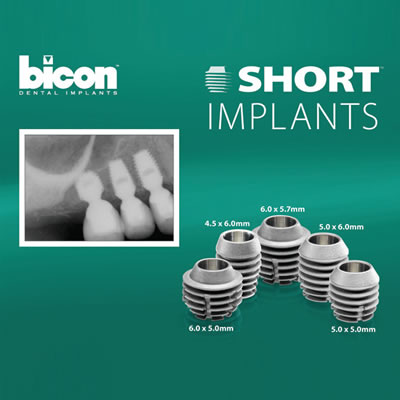
Based in Boston, USA, BICON are the only designers and producers of Bicon dental implants since 1985.
The Bicon System is a unique system which offers the dental community around the world a complete package of solutions since 1985.
The unique design of Bicon follows the principles of sound bioengineering. This is a revolutionary clinical technique that not only withstood the test of time, but keeps on guiding oral implantology.
Why BICON?
The Bicon implant was designed to rebuild teeth without using screws.
Due to this reason, clinicians, technicians and patients are kept away from the limitations and underlying faults that may occur when utilizing screw systems.
Short implants
When the Bicon system initially appeared in 1985, implants measuring 8 mm were considered short – the great majority of the other systems measuring 12-14 mm and sometimes even 18-20 mm. Since then, the natural progression of the Bicon design philosophy has led to the creation of implants that are as short as 5.0 mm, 5.7 mm, 6.0 mm, all with clinically proven success since 1977.

Sistemul Bicon
The angled tab of Bicon offers more flexibility during the implant repositioning surgery and insures that the bone is kept at an impressive level. At the same time, it insures that more bone is left over the implant and also allows for the easy formation of aesthetically contoured gums.
The 1.5° conical closure insures a very strong anti-bacterial barrier between the implant and blunt, therefore discharging any tiny opening through which germs could infiltrate – smaller than 0.5 microns. The conical closure also insures a 360° positioning of the blunt.
The very thin Bicon implants facilitate both the reconstruction of all maxilary lateral incisors, as well as the unidental reconstruction of mandibular incisors.
The short Bicon implants increase the various placement possibilities of implants and decrease the necessity for bone grafts.
Bicon implants create an up to 30% higher integrated surface than a screw implant with the same measurements and allows for the formation of a mature haversian bone that is similar to the cortical bone between the fins of the implant.
Cap integrating on the blunt constitutes a revolutionary way of prosthesis without using cement, screws, and no spaces between the implant and blunt.



